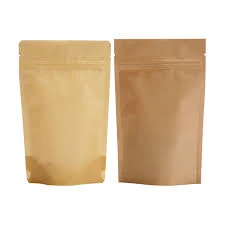- Afrikaans
- Albanian
- Amharic
- Arabic
- Armenian
- Azerbaijani
- Basque
- Belarusian
- Bengali
- Bosnian
- Bulgarian
- Catalan
- Cebuano
- chinese_simplified
- chinese_traditional
- Corsican
- Croatian
- Czech
- Danish
- Dutch
- English
- Esperanto
- Estonian
- Finnish
- French
- Frisian
- Galician
- Georgian
- German
- Greek
- Gujarati
- haitian_creole
- hausa
- hawaiian
- Hebrew
- Hindi
- Miao
- Hungarian
- Icelandic
- igbo
- Indonesian
- irish
- Italian
- Japanese
- Javanese
- Kannada
- kazakh
- Khmer
- Rwandese
- Korean
- Kurdish
- Kyrgyz
- Lao
- Latin
- Latvian
- Lithuanian
- Luxembourgish
- Macedonian
- Malgashi
- Malay
- Malayalam
- Maltese
- Maori
- Marathi
- Mongolian
- Myanmar
- Nepali
- Norwegian
- Norwegian
- Occitan
- Pashto
- Persian
- Polish
- Portuguese
- Punjabi
- Romanian
- Russian
- Samoan
- scottish-gaelic
- Serbian
- Sesotho
- Shona
- Sindhi
- Sinhala
- Slovak
- Slovenian
- Somali
- Spanish
- Sundanese
- Swahili
- Swedish
- Tagalog
- Tajik
- Tamil
- Tatar
- Telugu
- Thai
- Turkish
- Turkmen
- Ukrainian
- Urdu
- Uighur
- Uzbek
- Vietnamese
- Welsh
- Bantu
- Yiddish
- Yoruba
- Zulu
Comparing Raster and Vector Graphics for Optimal Design Choices
Raster vs. Vector Graphics Understanding the Differences
In the dynamic world of graphic design and digital art, understanding the different types of graphics is essential for anyone looking to create visual content. Among the most common formats are raster and vector graphics, each with their own unique characteristics, advantages, and limitations. This article will explore the key differences between these two types of graphics, helping you make informed decisions for your projects.
What are Raster Graphics?
Raster graphics, also known as bitmap graphics, are composed of a grid of individual pixels. Each pixel occupies a specific location and has its own color value. Common file formats for raster graphics include JPEG, PNG, GIF, and BMP. The primary characteristic of raster images is that they are resolution-dependent. This means that the quality of the image is directly related to its resolution—measured in pixels per inch (PPI).
When you enlarge a raster image, you will notice a loss of quality, resulting in pixelation, where the individual squares of color become visible. This makes raster graphics particularly suitable for detailed images such as photographs, where subtle color variations and intricate details are crucial. However, their pixel-based nature makes them less versatile when it comes to resizing without sacrificing image quality.
What are Vector Graphics?
In contrast, vector graphics are created using mathematical equations to define shapes, lines, and colors. These graphics are composed of points, lines, curves, and polygons, which are all based on mathematical expressions. Common file formats for vector graphics include SVG, AI, and EPS. The standout feature of vector graphics is that they are resolution-independent, meaning they can be resized infinitely without any loss of quality. This makes vector images especially suitable for logos, icons, and illustrations that need to be displayed at various sizes, from business cards to billboards.
raster vs vector graphics

Vector graphics excel in creating clean, sharp lines and smooth curves, making them the go-to choice for illustrations, typography, and graphic design elements. However, they may not be ideal for complex images like photographs, where the need for detailed gradients and textures can be challenging to achieve.
Key Differences Between Raster and Vector Graphics
1. Composition Raster graphics are pixel-based, while vector graphics are based on mathematical equations. 2. Resolution Raster images are resolution-dependent, meaning they lose clarity when resized. Vector images remain clear and sharp regardless of size. 3. Detail Raster graphics can depict intricate details and color variations, making them ideal for photography. Vector graphics are better suited for simpler designs, such as logos and illustrations. 4. File Size Raster files tend to be larger in size, especially at high resolutions. Vector files are generally smaller, as they store data in mathematical formulas rather than individual pixel information.
5. Editing Editing raster graphics can be more complex and may require specialized software (like Adobe Photoshop) for manipulation. Vector graphics can be easily edited with programs like Adobe Illustrator, where shapes can be resized and colors changed without loss of quality.
Conclusion
Both raster and vector graphics have their unique strengths and weaknesses. The choice between them largely depends on the specific needs of a project. For instance, if you are working on a project that requires detailed imagery, such as a photo or a complex visual, raster graphics are the way to go. On the other hand, if you need to create artwork that can scale without losing quality, such as logos or icons, vector graphics are your best bet.
Ultimately, understanding the differences between raster and vector graphics is crucial for graphic designers, digital artists, and anyone involved in visual content creation. By knowing when to utilize each type, you can enhance your designs and ensure they meet the desired quality and functionality. Whether you're creating a website, designing marketing materials, or developing artwork, knowing the right graphic format can make all the difference.













